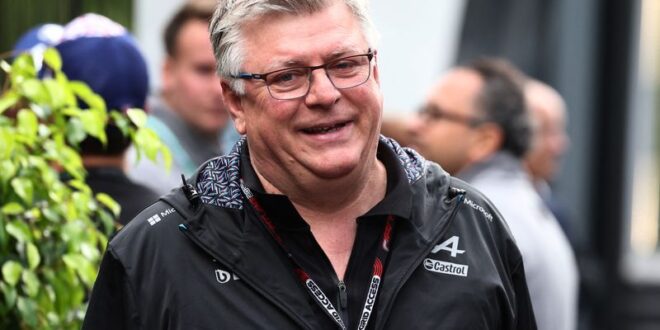LONDON (Reuters) – Formula One’s 2024 calendar has a record 24 races but former team boss Otmar Szafnauer reckons the limit could still be some way off.
The American, on ‘gardening leave’ until August after his stint as principal of Renault-owned Alpine ended last July, told Reuters ahead of Saturday’s Bahrain season-opener he felt the sport could manage more with careful planning.
“For me, if you plan it right, I think between 25 and 30 is the right number,” he said — a controversial view in a sport wary of staff burnout.
“If you go to 30, you really have two teams (within a team)and each team does 15. That’s an easy life compared to what you’ve got today.”
Szafnauer, who was previously also principal at Aston Martin and Force India/Racing Point, said he started thinking while at Alpine about the logistics of how to keep employees happy and do more races.
Since his departure, the Soft Pauer company he co-founded and that produced the original F1 timing app has launched an EventR app to help make group travelling easier for racing teams.
“I get what Liberty (Media) are doing, it’s the right thing for the sport,” Szafnauer said of the commercial rights holders’ gradual expansion — particularly in the United States where there are now three races — since taking over in 2017.
“We’re a global sport, truly global and should we be going to 25, 26, 27 races?”
Szafnauer recalled how the NASCAR stock car series used to have more than 40 races just in the United States before the current 36.
“If you say ‘OK, how about 26 races or 28 races in all the countries in the world?’ Yeah, that’s sustainable. But the calendar has to allow it,” he said.
“If you can overcome the logistics, which I think you can with a bit of planning, and then overcome the human element of it, which I think we’re good at doing, you just have to look at it in a creative way.”
Under former F1 commercial supremo Bernie Ecclestone the calendar did not go beyond 17 races until 2004. It reached 20 by 2012 and 21 for the first time in 2016.
Formula One chief executive Stefano Domenicali said last year, amid concerns the sport’s owners wanted to add more, that 24 races was the right number.
Domenicali has also said, however, that there is enough interest from promoters for at least 30 races, with the sport keen to include a race in Africa and Madrid announced as a new venue for 2026.
Mohammed Ben Sulayem, the president of the governing FIA, sees it differently and told Reuters last October that the sport needed “more teams and fewer races”.
LUCRATIVE RACES
This year’s calendar runs from March 2 to Dec. 8 with three triple headers including the closing one that takes teams from Las Vegas to Qatar and an Abu Dhabi finale on successive weekends.
Since Bahrain hosted the first grand prix in the Middle East in 2004, the sport has become even more global with lucrative races in countries like Saudi Arabia, Azerbaijan and Qatar.
Szafnauer said the point would come when teams, now sustainable with a greater share of the revenues and a budget cap with headroom for more races, divided up the season between two crews to ease the load.
He said he had tried to start the process at Alpine, offering one prospective strategy hire the possibility of working 10 races at the racetrack and 10 at the factory with four ‘wild cards’.
“The wild card means you choose four races that you don’t either do remotely or from the racetrack,” he explained.
“People look at it and say it’s just taking up too much of my life and therefore I’m missing birthdays and weddings and all the stuff I don’t want to miss. There’s a way around it.
“My way around it was ‘OK, out of the 24 you do 20 and get four wild cards. Just tell us the wild cards in advance and we’ll work around it.”
(Reporting by Alan Baldwin, editing by Toby Davis)
 BeritaKini.biz Berita Viral Terkini di Malaysia
BeritaKini.biz Berita Viral Terkini di Malaysia





